Like several of us perhaps, I first stumbled upon Jose Pereztroika by pure accident.
Several collectors were proudly displaying their timeline posters, and I wanted to know more about the man behind them. I quickly fell in love in with this man’s attention to detail in not only his blog website, Perezscope, but also his Instagram. His approach to looking at watches (especially Panerai) was methodical, forensic yet very graphic – it was an interesting combination I have not seen before.
(Jose Pereztroika is far right, together with a fellow watch collector).
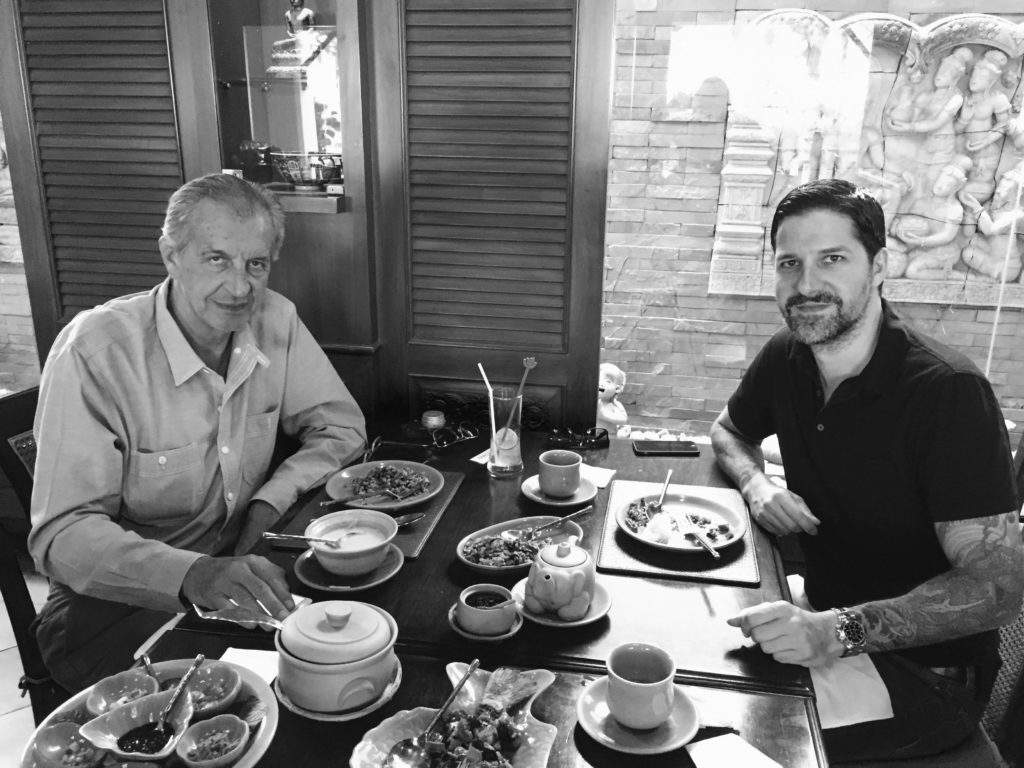
With a weakness for history, Jose has one in goal in writing his blog: He wanted to get to the bottom of all the myths that were floating around Panerai and reveal what he believes is the truth concerning the history of Panerai based on research and detailed analysis. To separate fact from fiction.
Just recently Panerai was forced to delete a picture on their official Instagram due to Jose calling them out: it turns out that the picture was incorrect in regards to the history of Panerai. Now he has turned his attention to the Rolex Daytona and with his attention to detail will help collectors navigate what is perhaps the biggest minefield of all: the Rolex Daytona.
I am a devoted follower of everything he does since mid-summer 2017; I believe his valued added is very large for the watch collecting community. He is backed by no brand, no company-he has no hidden agenda and he aims to provide one thing. Accurate reliable information of Panerai and Rolex based on methodical research.
It is an absolute privilege and honour to interview him for Le Monde Edmond.
How did your obsession with Panerai start?
JP: It is indeed an obsession and the seed was planted very early on.
When I was a child, my mother used to work part time and while she was away an Italian family looked after me. This is how I learned to speak Italian. I remember sitting on the Italian family’s window sill always browsing through Italian comics. One of those comics was about Italian frogman agents. I loved it!
Many years later in 1998, a colleague showed me a modern Panerai on the very first Panerai website. He told me about the history of the brand and that the watches have been originally worn by Italian frogmen during WW2. Kaboom, suddenly I was thrown back into my childhood (comics on the window sill- see picture here) and my interest for Panerai was ignited immediately. Over the course of time I owned several modern Panerai models.
In 2014, after a 17 year non-stop work period in digital advertising, I decided to take a one year sabbatical leave. I left Switzerland and rented a house on Koh Samui, Thailand. This is when I started to study vintage Panerai intensively.
(A copy of the comic books that started everything for Jose Pereztroika).
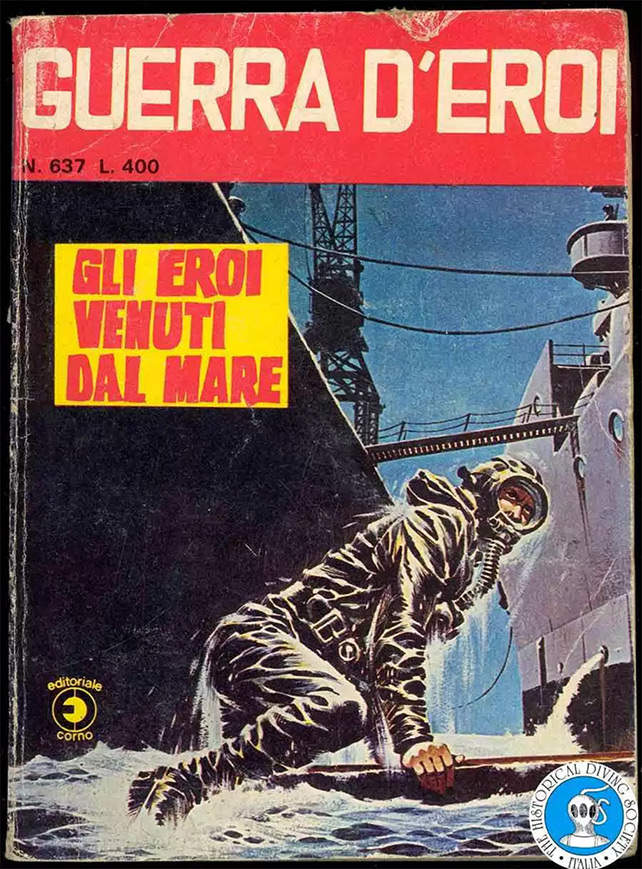
Modern Panerai were and remain very collectable. The long lasting CEO of the brand (Bonati) must have done something right?
Dino Zei, the Managing Director of the original Panerai company from 1972 to 1997, proved to have a good nose with the re-edition of Panerai watches in 1993. But the company was struggling financially due to the dissolution of the Soviet Union and the following massive defence budget cuts. Panerai had no money for marketing. This changed dramatically when Vendôme (Richemont) took over the brand name in 1997.
Panerai had all the ingredients to take off like a rocket. The bold design and the fantastic history of the brand are invaluable assets. Bonati’s initial strategy to keep the numbers low made Panerai watches super desirable. Panerai got hot, very hot. It actually started a new trend. However, when Bonati was assigned to Officine Panerai, he didn’t believe the brand could be successful. Used to premium brands like Cartier, Vacheron, etc., Bonati considered the Panerai watch “un orologio del cazzo”, a crap watch. Cazzo is Italian for penis. He even had some special dials made with “Cazzomir Panerai” inscriptions.
Panerai is famous for its die hard fans and Paneristi forum? Did you also take part in this growth?
For many years, I have been a very quiet Panerai aficionado. I enjoyed my modern Panerais but had no time to mingle around in forums. When in 2015 I started to publish the first results of my research, I got banned from the Paneristi Forum.
For me a Panerai luminor with explorer dial is one of the purest designs in watches ever made. Do you agree?
Yes, I totally agree!
The 3-6-9-12 Panerai dial is a typical “Form Follows Function” design. The Italian Incursori (Assault swimmers) used to operate in dirty, murky sea port waters, mostly at night or dawn. Visibilty down there was extremely bad. As the dial design suggests, minutes were not crucial to these sailors. The Incursore’s job was to attach a warhead underneath a ship’s hull and try to escape. The explosion would take place several hours later or, if smaller charges were used, as soon as the ship reached a certain speed. The 6152/1 Rolex case with the patented Panerai crown-protecting device (Luminor case) is the culmination of Panerai design.
What fascinates you with the brand Panerai? Is it the history?
Yes, definitely the history, of both, the manufacturers and the daredevils who wore the watches in action. The fact that so many companies were involved in the production of these stunning timepieces makes it even more interesting. The cases were made by C. R. Spillmann, the movements by Cortebert, the early dials were made by Zelim Jacot in St. Imier. The watches were then assembled by Rolex in Geneva and sent to Florence. Later aluminium sandwich dials were produced by Panerai itself.
An interesting observation is that Ref. 3646 was no longer state of the art when it first was supplied in April 1940. Rolex had already developed completely new Oyster cases (Bubbleback) which were much easier to maintain than late 1920s 3-piece Oyster cases. Rolex Bubblebacks were already equipped with self-winding movements while Panerai watches “only” received hand wound pocket watch movements made by Cortebert.
Regardless, vintage Panerai watches are outstanding. No other brand is comparable, not even close. It is therefore paramount to unearth the true history of this fascinating brand and make away with all the made up stories.
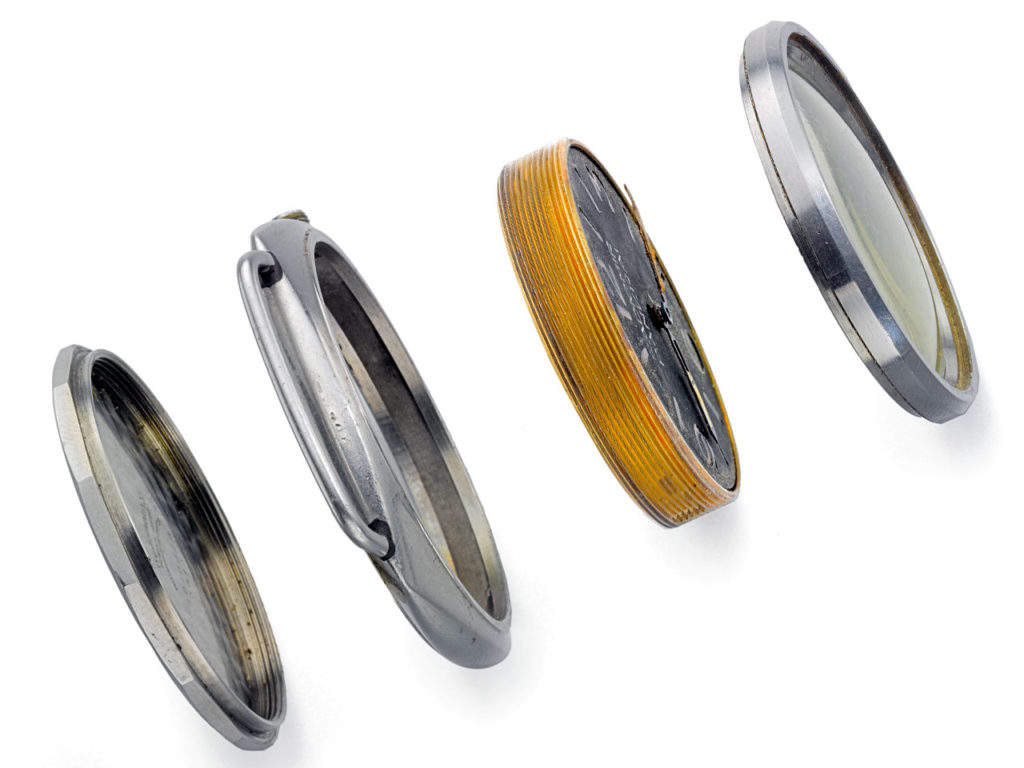
Rolex and Panerai have had a close relationship historically? Can you elaborate?
Giuseppe Panerai was a renowned Rolex retailer in Florence.
The special relationship to Rolex had probably been established by Giuseppe’s father Guido. When Guido died in 1934, Giuseppe took over the business. The cooperation with Rolex was so important that the Swiss company agreed to produce a special range of watches exclusively for Panerai and the Italian Navy. I noticed that the modern Panerai company never mentions Giuseppe Panerai, although he was the mastermind behind the watches and the instruments.
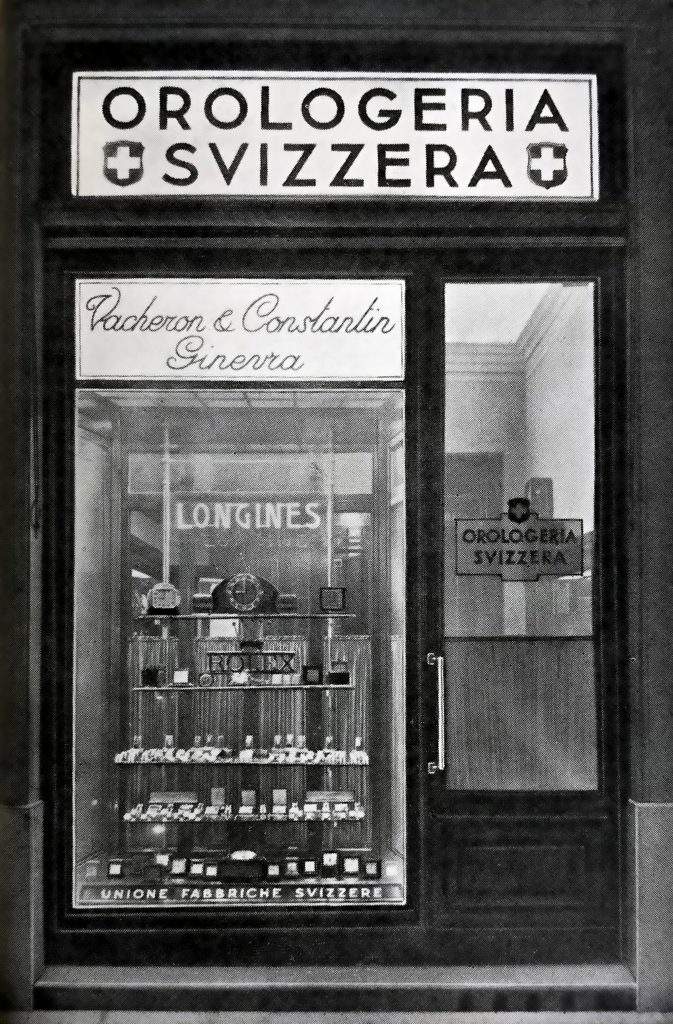
There is so much forgery and manipulation going on with Rolex – that you need to become an expert in order not to get taken advantage off. Is it similar with Panerai?
The original Panerai company moved to new premises in the early 1990s in order to bring the whole staff under one roof. To make the relocation as easy as possible, lots of documents were simply disposed of. Old machines, instruments, vintage watch parts and piles of other stuff were given away for free. Hence, many of the manipulated watches were assembled from the parts found at Panerai. A prospective buyer should do his homework before buying a vintage Panerai watch.
He or she can contact me anytime. I will gladly try to help as much as I can.
Rolex does not really help their vintage collectors. They are left to do their own research. How is it with Panerai? Do they take care of their collectors?
Most Swiss watch brands discarded their archives at some point, just like Panerai. They didn’t expect their products to become sought-after collector items.
I talked to several Swiss dial makers and none of them kept an archive. It is up to serious and independent researchers to find the truth, especially during times when marketing units of major brands start “copy pasting” unverified content from the internet. The modern Panerai company exists only since 1997. Together with the brand name, Vendôme inadvertently inherited all kinds of made-up stories invented between 1993 and 1997. I know the modern Panerai is trying their best to take care of vintage Panerai collectors. The problem is their lack of understanding, which in some cases could lead to authenticating questionable watches.
I’ve seen watches that are completely fake exhibited at official Panerai events all over the world.
Did the founders of Rolex and Panerai share a common vision in your mind?
Well, Rolex’s aim was always to create the perfect watch for every situation.
They must have been thrilled to get the opportunity to create the first watch for professional frogmen. Panerai’s part, on the other hand, was to develop a sophisticated dial that was super visible in murky sea port waters. The original Panerai sandwich dials are true works of art, not comparable to the simplified sandwich dials of today. So yes, I think both companies shared a common vision, that of quality and perfection.
(Below details of the beautiful dial of the Panerai Angelus 240)
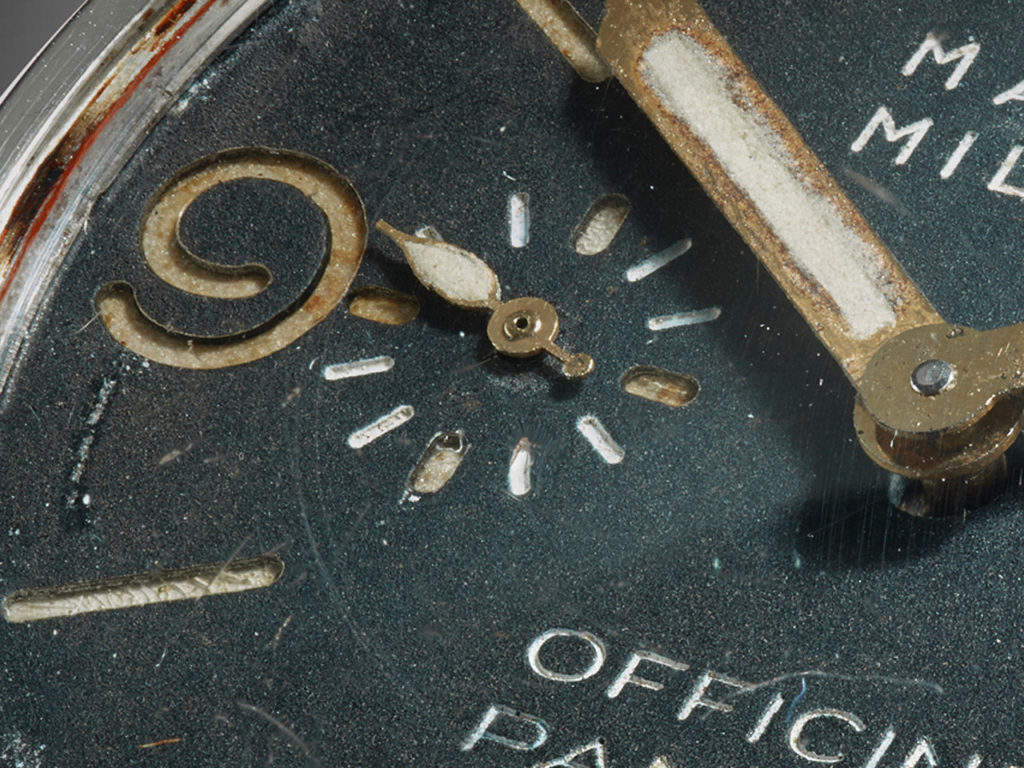
(Below the evolution of dials of Panerai dial: top early 1940s, centre 1942, bottom 1950s).
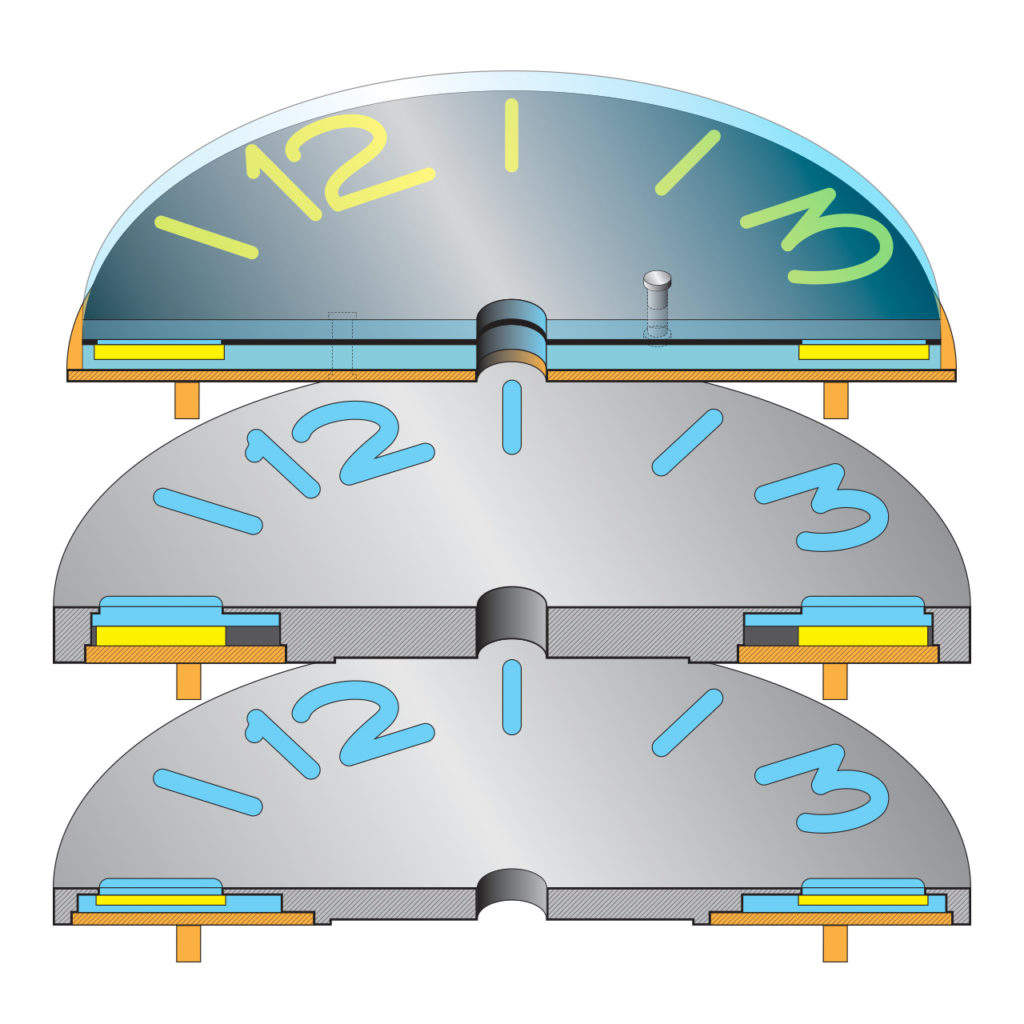
Your website is about uncovering the truth? Which lies have been told that bother you the most?
My website is about separating facts from fiction.
The history of Rolex and Panerai is amazing and fabricated stories are totally unnecessary. One of the worst “lies”, in my opinion, is that Rolex only delivered movements to Panerai. This makes absolutely no sense, considering the movements were made by Cortebert. Myths like this originated from the Pre-Vendôme era and are still being perpetuated by the modern Panerai.
Has your background in Architecture and industrial design helped you in your analysis of watches?
Absolutely!
Architecture and industrial design are everything about details and craftmanship. I worked with all kinds of machines and done lots of prototyping during my studies at the University of Arts in Basel. The understanding of production processes helps tremendously when it comes to assessing a watch, or parts of it.
Most collectors pay attention to the dial. You pay attention to the movements? What story does a movement tell you?
Every detail of a watch is important!
My latest discoveries, for instance, are about dial details rather than movements. However, when I started to study vintage Panerai, I created all kinds of databases. My research is based on data. The movements found in most vintage Panerai watches were made by Cortebert, an important Swiss watch company that ceased to exist during the Quartz Crisis. Only little information was available.
Rolex focused their business on Oyster wristwatches with small movements made by Aegler in Biel. Rolex pocket watches on the other hand were equipped with a variety of movements from different manufacturers like Montilier, Cortebert, Recta, Welta, A. Michel, etc.
I documented thousands of Rolex/Cortebert pocket watches and learned plenty about Cortebert and their calibers. The knowledge acquired during this process helped me debunk several Panerai myths.
Cortebert produced these movements in batches and every batch has its own characteristics (see picture below). The engravings may vary slightly, the plating is different, the Côtes de Genève were applied at adifferent position, some parts were improved, etc. A movement with mismatched parts can tell you whether it was altered during a service or if the movement was completely assembled from parts.
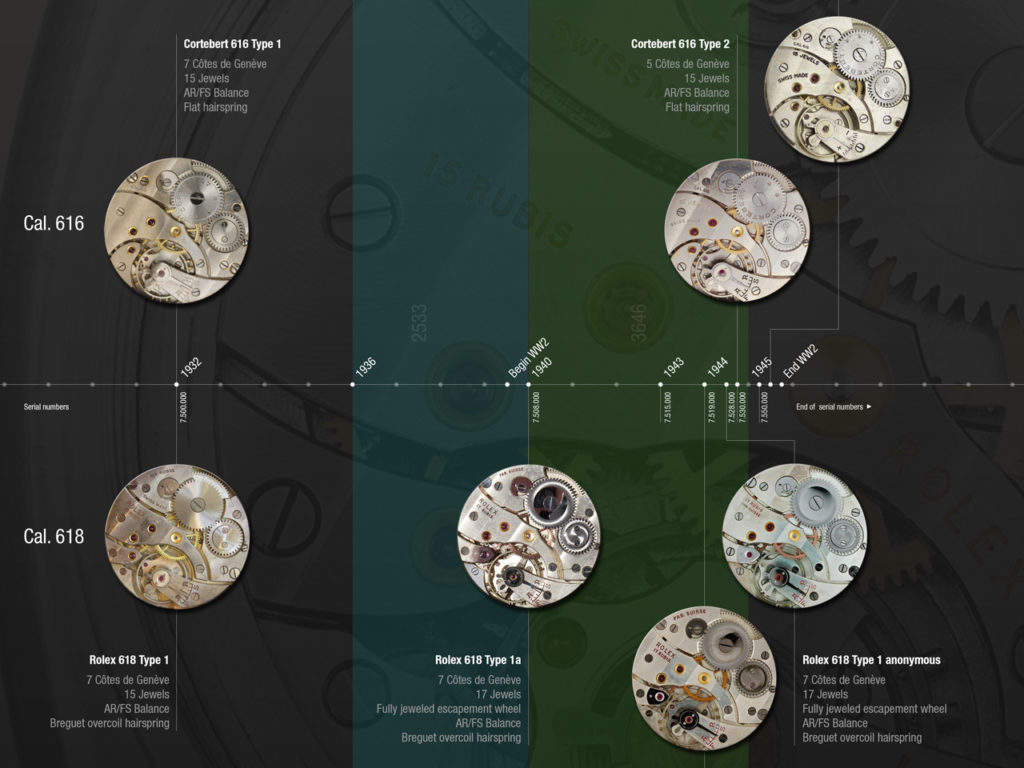
If you had carte blanche and could choose any vintage Panerai model you wanted. Which one would you chose and why?
For one of my latest articles, I helped a renowned Panerai collector restoring one of his watches to the original condition. The watch had been altered in the late 1990s and after more than 17 years, I was able to track down the original dial and make it available for the collector. If I were to choose, I would probably take that watch, a 6152 from 1953 with very special engravings on the case back.
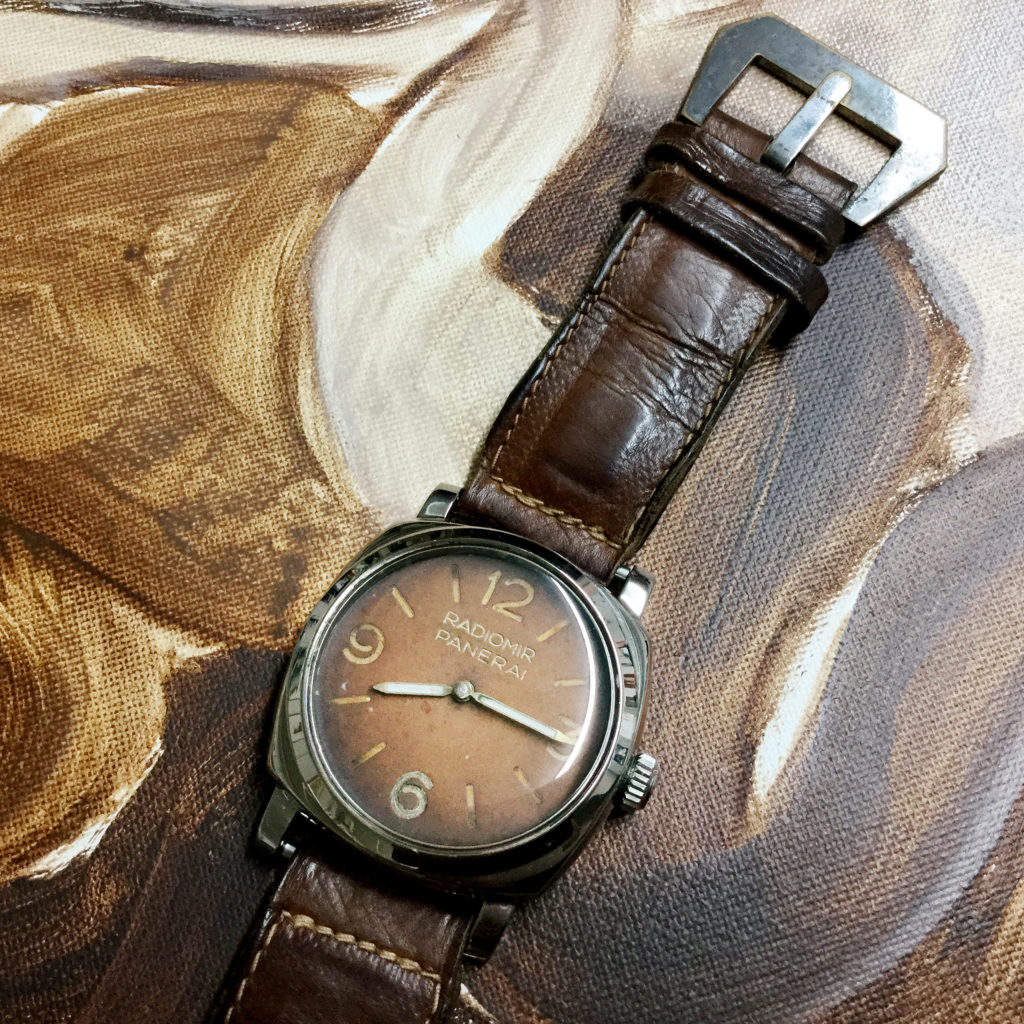
(The 6152 with special engraving on the back. Notice the Milanesi and octopus figure).
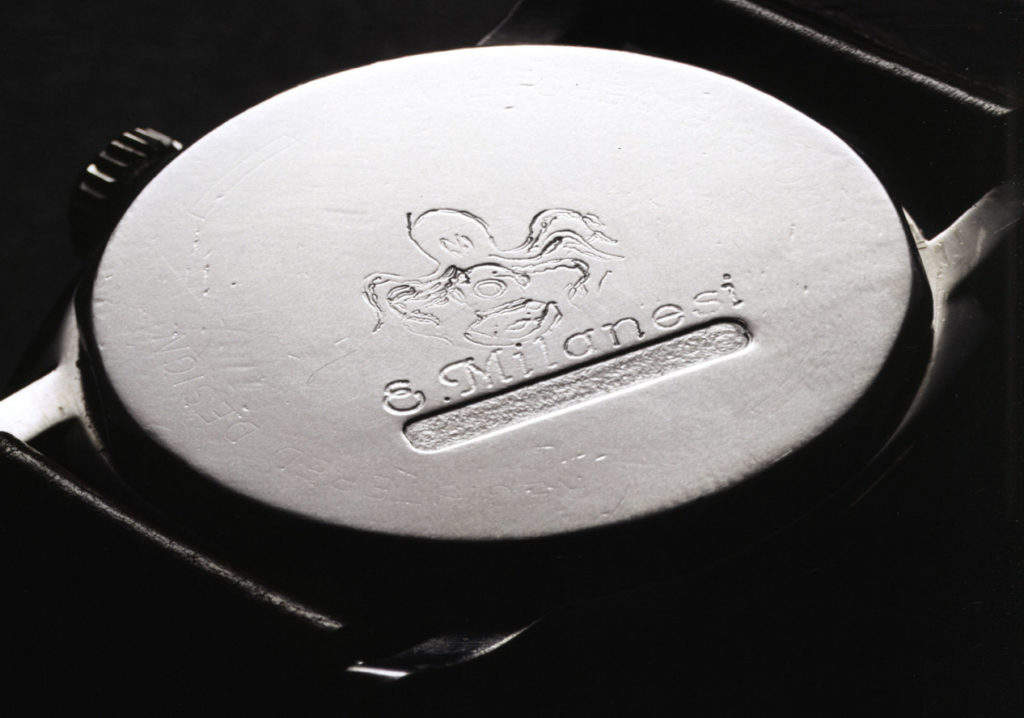
What are the most important vintage Panerai watches? Can you give me three of the most important watches?
One of the most important Panerai watches could be Luigi Durand de la Penne’s 3646, which is exhibited at the Com.Sub in the Varignano Fortress in Le Grazie.
In December 1941, Luigi played a major role in the Decima MAS’s most successful attack on the British Naval base in Alexandria, Egypt. He was subsequently arrested and his watch disappeared. After the Italian surrender to the Allies in September 1943, Luigi changed sides and fought together with the Allies against the Nazis. At some point he received a new Panerai 3646. Luigi’s family donated this very watch, together with other memorabilia, to Com.Sub after Luigi’s death.
Isn’t the crazed crystal the most amazing thing you have ever seen!?
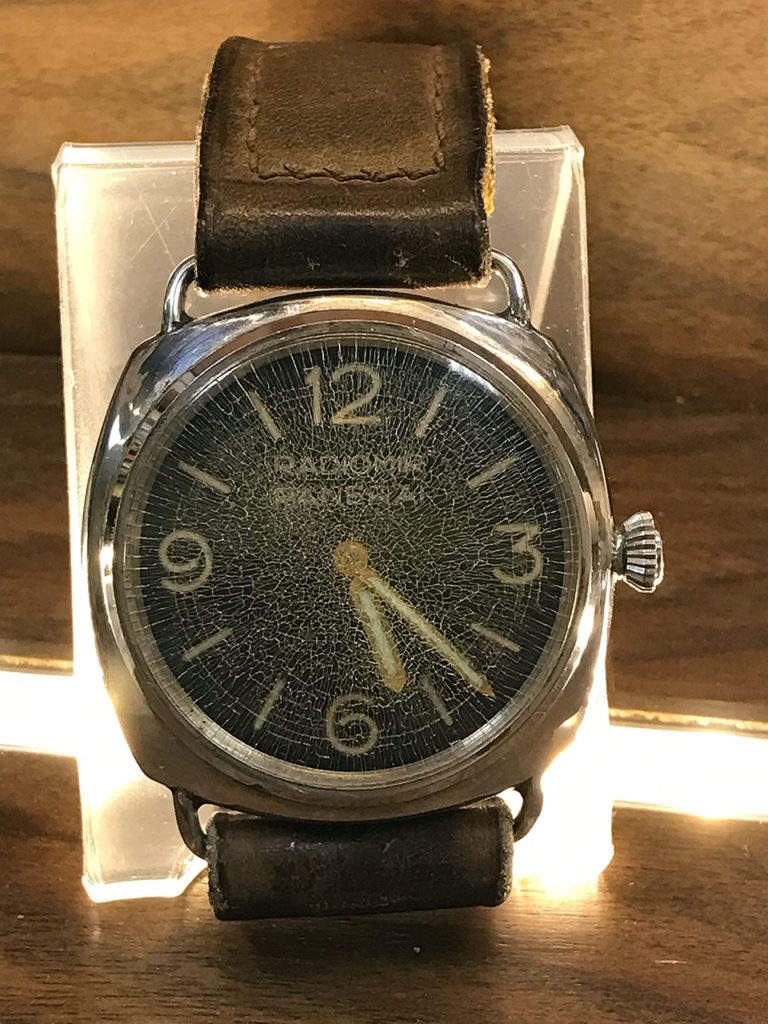
Another important watch is a 6152/1 that was on the wrist of an Incursore (assault swimmer or Frogman) when he died during an underwater exercise in 1957.
The watch was given to the sister of the deceased and she stored it in a drawer for the next 55 years. This watch is a true time capsule. It shows that the 6152/1 was born with a Radiomir dial and that initially, the patented Panerai crown guard was not used on reference 6152/1.
(Below wonderful dial details of the 6152).
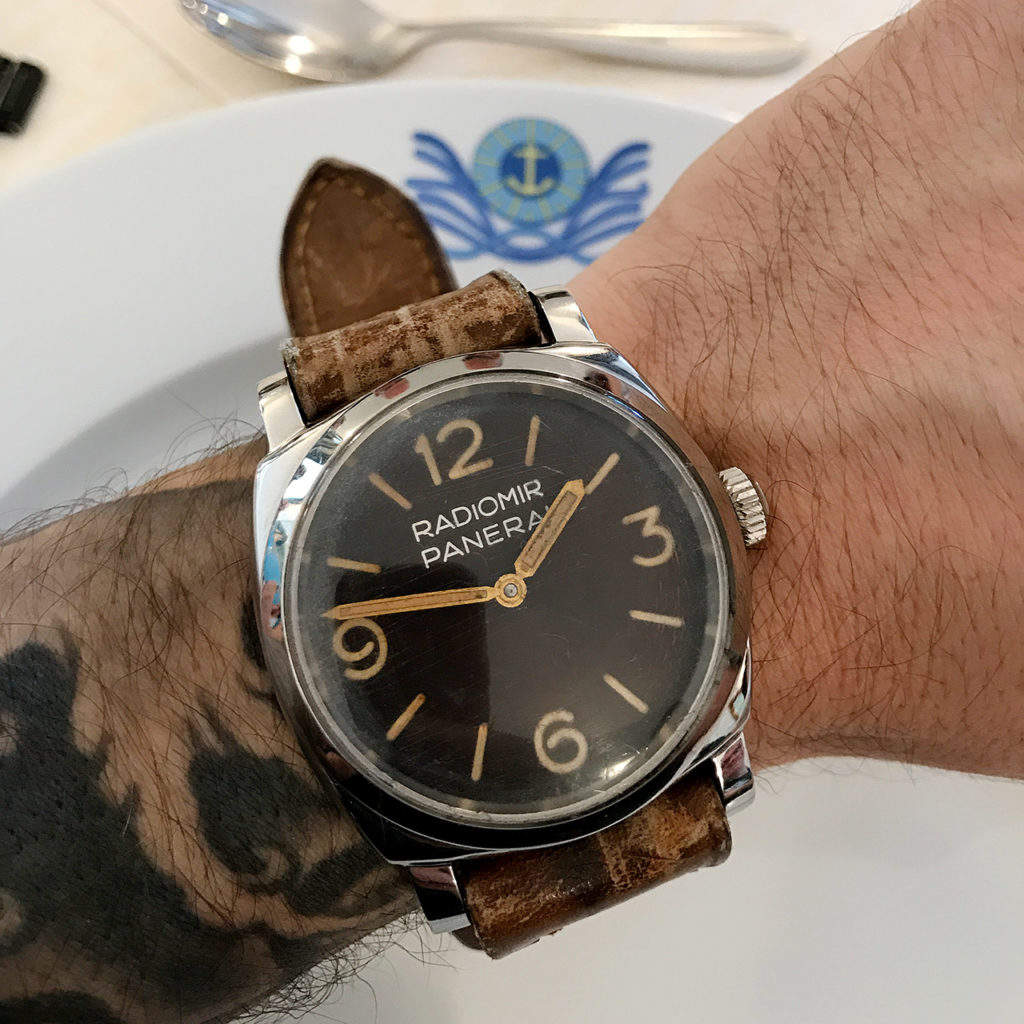
(Below the open movement of the watch above. The movement equally clean in design and beautiful)!
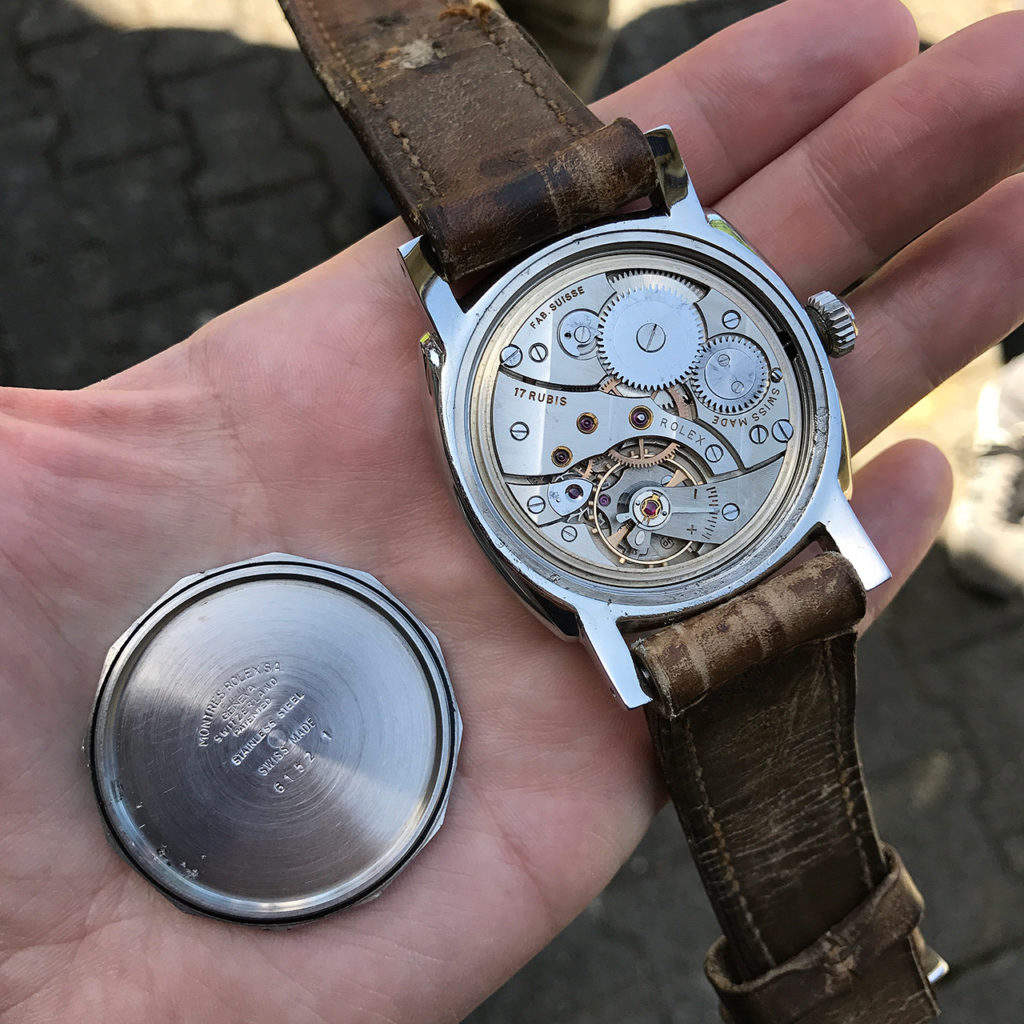
The third watch is the GPF 2/56.
This model is a milestone in Panerai’s history as it was Panerai’s first own development. The case design is completely different due to the simple fact that all prior designs were the intellectual property of Rolex.
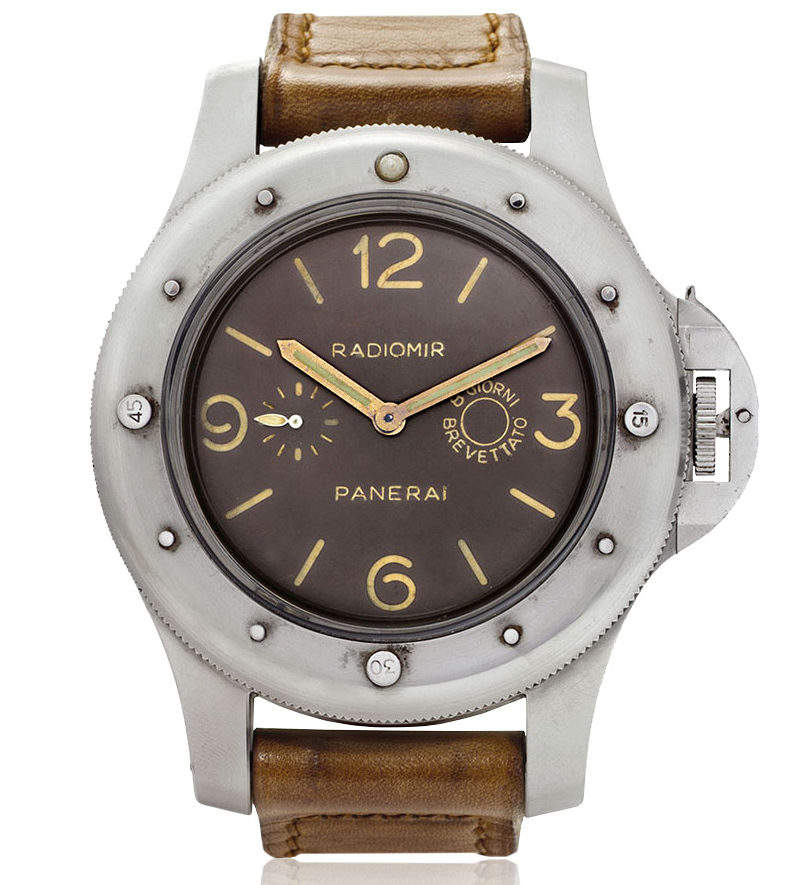
Panerai has a close relationship with the Italian Frogmen (a unit of the Italian Navy). But I know Panerai was also close the Egyptian army. Can you tell me more?
After WW2, in 1948 to be exact, an Ex-Decima MAS member named Ferdinando Pacciolla was hired by Egyptian officials to help establish a diver commando school for King Farouk.
At the same time, Fiorenzo Capriotti, another Ex-Decima MAS member and fascist hardliner, travelled incognito to Israel with a fake passport provided by the Israeli secret service and founded the Shayetet 13 unit. Growing tensions between Britain and Egypt in the early 1950s led to anti-Western sentiments and massive riots in Egypt. Lieutenant Colonel Gamal Abdel Nasser came to power after a military coup. The situation became very hostile. Fearing a British/French invasion, Nasser signed an arms deal with the Soviet Bloc in September 1955.
It was during this time that the Egyptians approached the Italian Navy and asked for instruments and watches. Since the agreement between Rolex and Panerai was exclusive to the Italian Navy, Panerai was forced to develop their first own watch, the GPF 2/56. An Egyptian delegation went for the first time to Florence to meet with Giuseppe Panerai in July 1956. It is possible that during this first meeting, Giuseppe Panerai gave the Egyptians a few Ref. 6154 watches, since the Egyptians had ordered a bunch of Instruments and around 100 GPF 2/56s. However, a British/French/Israeli coalition invaded Egypt in October 1956 and seized the Sinai Peninsula and the Suez canal within 2 days. The Italians were also part of this coalition, in a secret mission. The British SAS had asked the Italians for assistance in order to locate the frequently changing Egyptian artillery positions around the Suez Canal.
(Below Frogman Pacciolla right, with Egyptian Navy Chief of Staff. On the wrist of Pacciolla the 3646 from WW2).
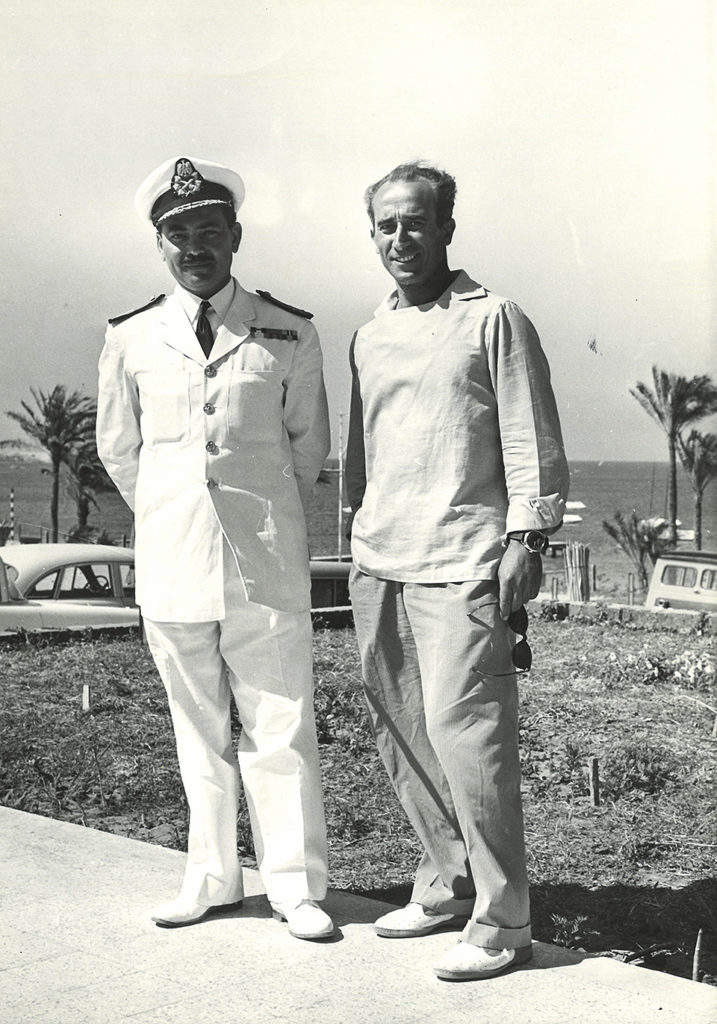
(Ferdinando Pacciolla with Egyptian diving recruits).
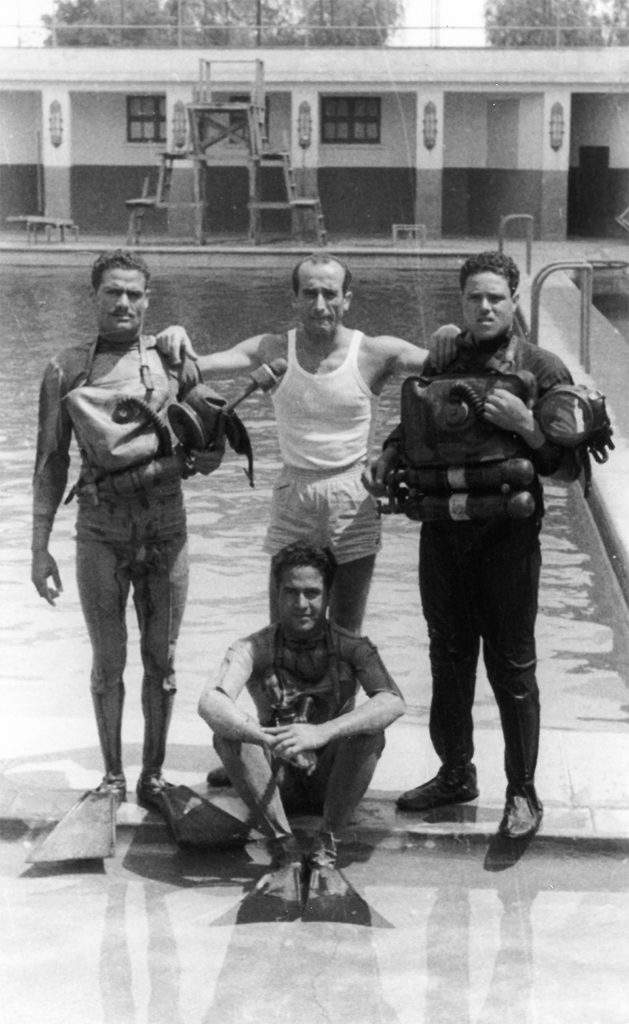
(The dapper Italian Frogman in his diving gear with an Egyptian diver).
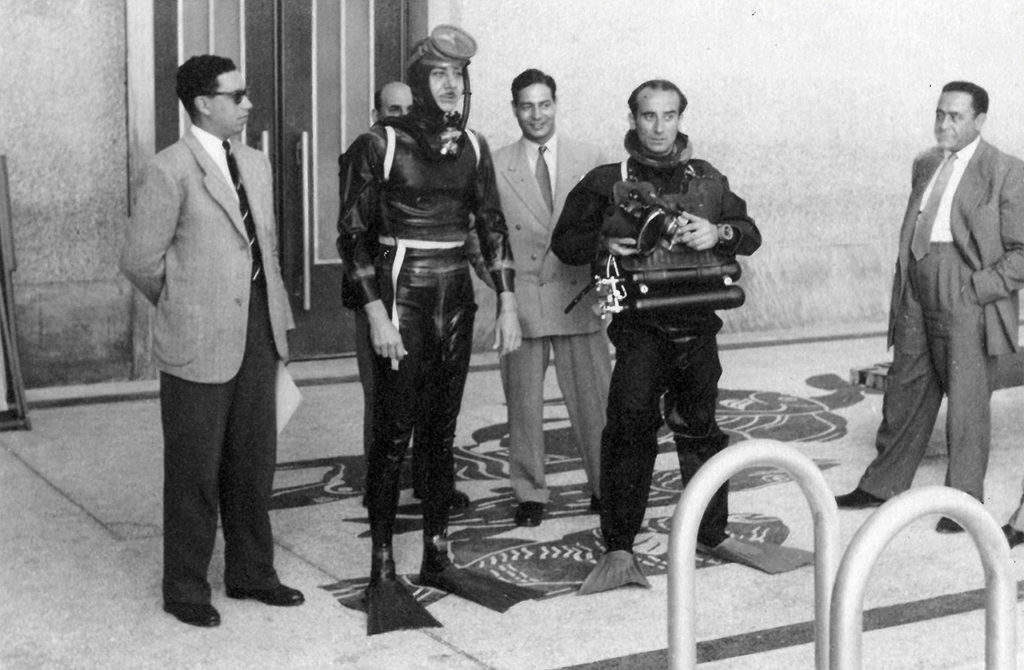
(Below details of a Panerai radiomir 6154 with cream dial).
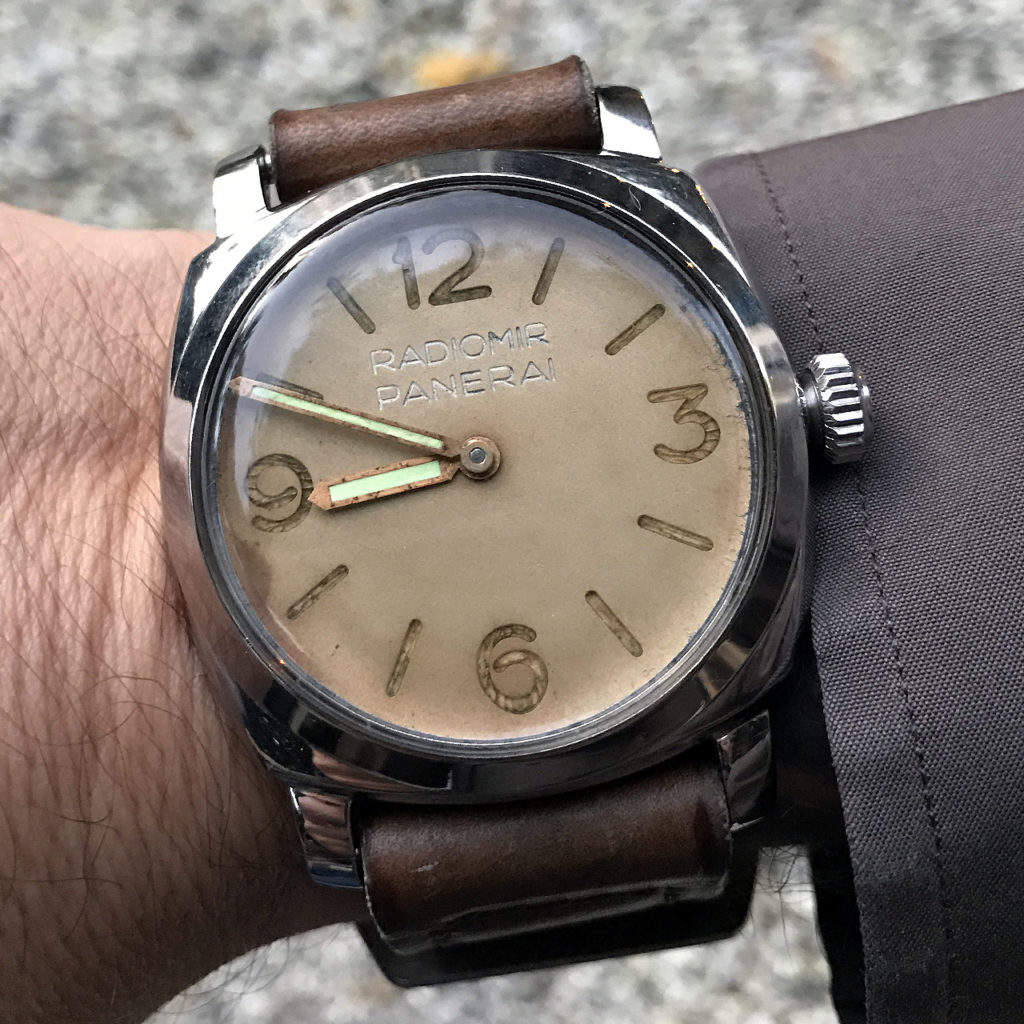
One of the first things I noticed about your Instagram and blog is your level of detail in analysis. It is very impressive. Are you this detailed oriented in everything you do?
Thank you for the compliment.
I make a living as an Art Director for digital communications. The most important part of my job is to create an impeccable user experience. User-centered design and usability are always crucial. I try to apply these rules to every article I write about watches as well. The goal is to make everything foolproof and easy to understand. I was born and bred in Switzerland, the country where most of our beloved timepieces were made. As you know, Switzerland is all about precision. The whole country works like a well-oiled clockwork.
However, as much as I like to focus on certain things, I can also be unbelievably chaotic.
What are your favorite watch brands besides Panerai?
There are many but Rolex is one of my favourite brands.
The most interesting thing about Panerai is the fact it actually was a Rolex Oyster watch. Hans Wilsdorf was a visionary, similar to Steve Jobs in our time. He bet on wrist watches when everybody else thought they were silly. The bet was won and Mr. Wilsdorf went on to create the perfect wirst watch. I also like Omega, especially the funky 1970s watches. I am also a big fan of the Lemania 5100 movement which was designed to be the ultimate space caliber. Early Longines are also interesting.
The list is long.
(Below a digital reconstruction of the Rolex 2533).
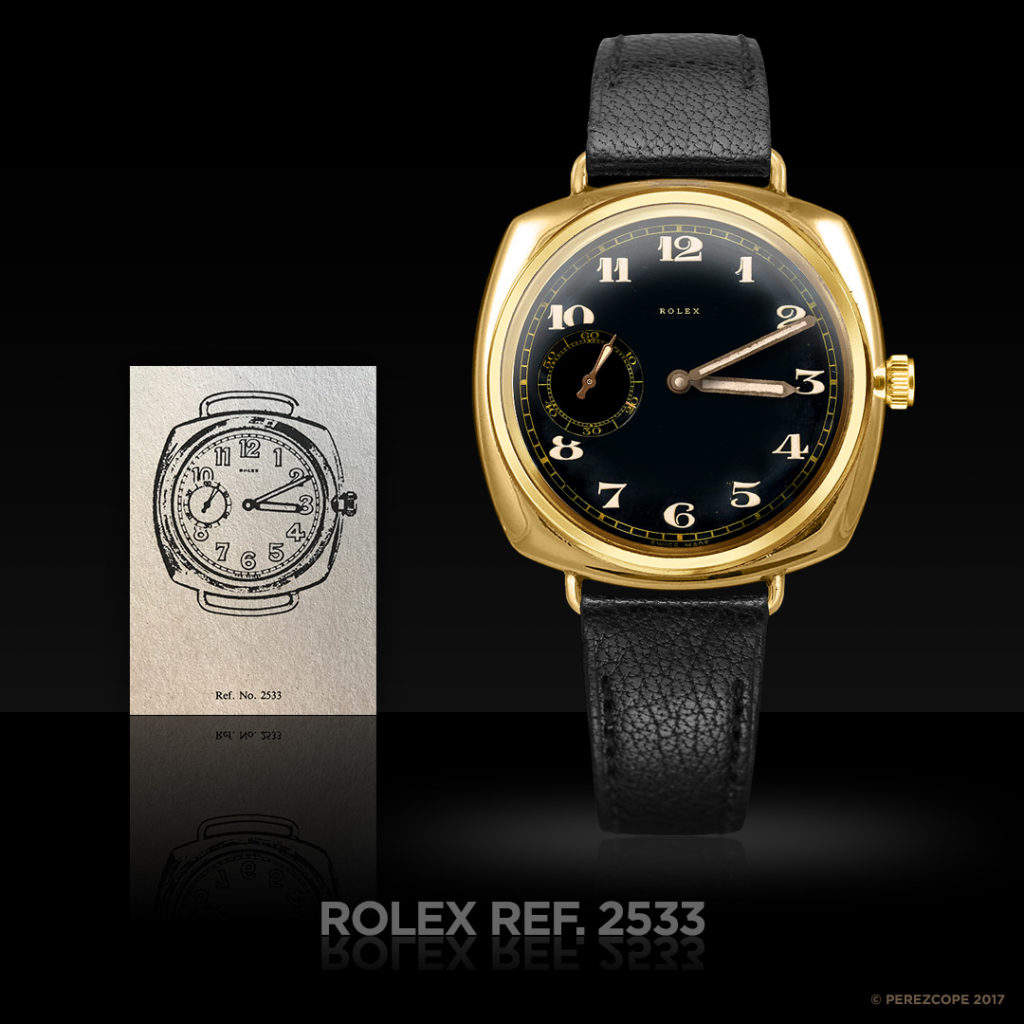
Do you have other hobbies beside watches?
Yes, my day should have at least 48 hours! I love travelling and meeting interesting people, my Weimaraner dogs, vintage cars and bikes, history, architecture, art, furniture, etc.
How did you come on the idea of making these chart timelines?
The timeline info graphics are visualisations of my databases.
History comes alive through context. Watches like Panerai or the Rolex Sea-Dweller were shaped by historical events and achievements. For instance, for many years watch enthusiast have been told on the internet the Rolex Sea-Dweller had been developed together with Comex. The cooperation between Rolex and Comex, however, began only in late 1971. One glimpse at the Sea-Dweller timeline is enough to understand where the idea for the helium escape valve came from.
This is how I look at things and I wanted to share my views with other watch enthusiasts!
(A timeline of Perezscope that is available to purchase via his website).

Which books do you recommend to a watch collector looking to learn more about Panerai, besides your blog?
Unearthing the true history of Panerai is an ongoing process.
The moment a book is printed the information it provides is already outdated. If you look at my discoveries over the past few month you’ll see that watches which were praised to be super important are just made-up. These books end up being nothing more than a collection of nicely arranged photos. However, if I were to recommend a book about Panerai it would definitely be “Panerai – Una Storia Italiana” by Loris Pasetto and Luciano Cipullo. It is well researched and offers a very good historical overview of both, the vintage and the Pre-Vendome era.
Most importantly to me, of the presented watches only 2 or 3 are questionable.
Thank you Jose! You can explore his main website Perezscope here. It is worth reading and following actively.
